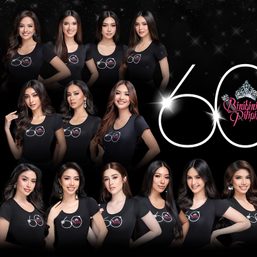SUMMARY
This is AI generated summarization, which may have errors. For context, always refer to the full article.

MANILA, Philippines – Department of Health (DOH) workers in Calabarzon have started patient check-ups and field work in communities where children got vaccinated with Dengvaxia.
The goal? To create a database to better monitor the health status of individuals who got the risky dengue vaccine.
The information DOH Calabarzon gathers from physical examinations will also be used to establish a post-vaccination baseline, which will determine, based on evidence, what interventions patients need.
How it works: DOH Calabarzon first identifies students by cross-checking the list of Dengvaxia recipients with a master list of students from the Department of Education (DepEd), community affairs officer Glen Ramos told Rapper in a phone call.
After this, schools will contact the parents of children who got Dengvaxia to notify them of scheduled check-ups. DepEd and DOH have also tapped parent leaders to assist in reaching parents or guardians of students.
Teams of about 25 people then administer and coordinate the health examinations, which take place in either public schools, which these students attend or barangay health units.
In the teams are nurses, epidemiologists, doctors, city and provincial health workers, school officials, and parent leaders.
According to Ramos, checkups take place in the different provinces daily. They aim to complete examinations for about 130 students per day in each school and municipality.

Ramos added that teams also do house-to-house check ups for students who are unable to make it to the venue for check-ups due to personal concerns.
If Dengvaxia recipients from Calabarzon have transferred to different provinces or cities, Ramos said the DOH regional office will send health workers to ensure they are part of monitoring efforts.
In May, DOH also gave psychosocial training for about 400 workers in preparation for field work.
How many students were vaccinated: Data obtained by Rappler showed 171,300 students in Calabarzon were given the dengue vaccine.
The following breakdown of students per province follows:
- Cavite – 45,573
- Laguna – 26,964
- Batangas – 39,493
- Quezon – 29, 845
- Rizal – 29,425
The health profiles of these patients will include personal health history, medical conditions, medications, and emergency contact information.
DOH Calabarzon hopes to complete the database before the end of the year.
Context: The move is part of the DOH’s response to the aftermath of the Dengvaxia controversy, which stemmed from vaccine company Sanofi Pasteur’s announcement last November 2017, that its vaccine could cause more severe cases of dengue if administered to a person who had not been previously infected by the virus.
Sanofi’s warning caused an uproar among parents, as Dengvaxia was used in the now-suspended dengue vaccination program for public schools students in the National Capital Region, Central Luzon, and Calabarzon.
In December 2017, DOH said it would gve out ballers and health monitoring cards to the more than 830,000 Filipino children who got the dengue vaccine. – Rappler.com
Add a comment
How does this make you feel?










There are no comments yet. Add your comment to start the conversation.